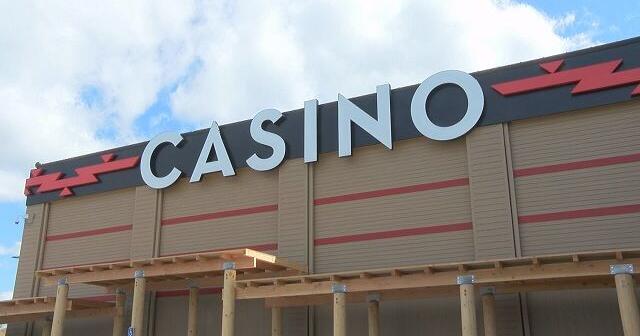The Bureau of Indian Affairs on Friday posted its Final Environmental Impact Statement for the Koi casino project. After a 30-day public comment period, the Bureau will issue its decision.
Three years ago, the Koi Nation — a small and at the time little-known band of Pomo Indians with ancestral roots in the Clear Lake area — purchased 68 acres of vineyard land in the Shiloh area just outside Windsor with bold plans to build a resort and casino.
Now the Koi are just one step away from federal approval.
Friday, the Bureau of Indian Affairs, a branch of the U.S. Department of the Interior, posted its Final Environmental Impact Statement for the Koi project — a 321-page document with hundreds of pages of appendixes. That disclosure opens another 30-day window for public review.
After Dec. 23, the Bureau will approve or reject the resort-casino.
If it’s approved, the federal agency will begin steps to formally transfer the Koi land to trust, paving the way for a massive commercial project in the oak-studded neighborhood.
“That is the final administrative determination,” explained I. Nelson Rose, a longtime consultant to government and industry in the complex field of tribal gaming. “Then it can go to the courts. Before you can take it to the courts, you have to exhaust all your administrative options. So this is it.”
If the BIA indeed approves the Koi casino, the decision will likely face legal challenges.
Residents of the Shiloh area, especially those in the neighborhood north of the site, have voiced serious concerns since the Koi’s initial announcement. They have focused on traffic, crime, noise, lighting, water usage and, more than anything else, the effect a large hotel complex and gambling operation would have on wildfire evacuations in the what’s known as the wildland-urban interface.
Those neighbors are backed by a deep roster of elected officials, including California Gov. Gavin Newsom, U.S. Sen. Alex Padilla, U.S. Reps. Jared Huffman and Mike Thompson, state Sen. Mike McGuire, the Sonoma County Board of Supervisors and the Windsor Town Council.
Perhaps more threatening to the Koi’s dreams of a potentially lucrative casino, a number of local tribes are also aligned against the project. Foremost among them are the Federated Indians of Graton Rancheria, operators of the Bay Area’s largest gaming facility, the Graton Resort & Casino in the Rohnert Park area.
The lawsuits could come as soon as the BIA makes it final determination in December. And they could be costly.
“I’d be interested to know the shortest time period a challenged Environmental Impact Statement took to wind through the court system,” Rose observed. “My guess is years. Because the gaming tribe that fights it has money. They can tie things up for a very long time.”
Wednesday, Graton Rancheria — along with the Cloverdale, Dry Creek and Lytton rancherias — took out a full-page ad in The New York Times, Washington Post and Los Angeles Times, urging readers (and no doubt key national politicians) to “Reject Reckless Casino Projects in Northern California.”
The opposing tribes contend the Department of the Interior failed to adequately consult them in the approval process, and that the Koi Nation has no genuine ancestral ties to the area marked for development. Graton Rancheria Chair Greg Sarris has referred to the proposal as “casino shopping.”
The Koi have argued from the start that the U.S. government displaced them from their true native homelands in the first half of the 20th century, forcing tribal members to resettle — mostly in Sonoma County. They also claim the Shiloh property is along their traditional trading route.
Koi leaders cite a change to Indian gaming law, known as the “restored lands” exception, which offers a lower threshold for proving a historical link to a casino site for tribes that have lost, and then regained, federal recognition.
The BIA considered several alternative plans for the Shiloh land, but its final environmental review focuses on the Koi’s preferred proposal — the biggest, most intense option.
That plan calls for a gambling floor of more than 530,000 square feet, with 2,750 gaming devices with 105 table games. A 400-room hotel would be add more than 260,000 square feet. The resort would include a four-story parking garage, an overflow lot and more than 5,000 parking spaces attached to the casino itself.
The BIA’s Final Environmental Impact Statement addresses land resources; water resources; air quality and climate change; noise; biological resources; cultural and paleontological resources; transportation and circulation; land use; hazardous materials and hazards; public services and utilities; socioeconomics; environmental justice; visual resources; and cumulative, indirect, and growth-inducing effects of the project.
NOTE: This is a developing story. Please check back for updates.
You can reach Phil Barber at 707-521-5263 or phil.barber@pressdemocrat.com. On X (Twitter) @Skinny_Post.



